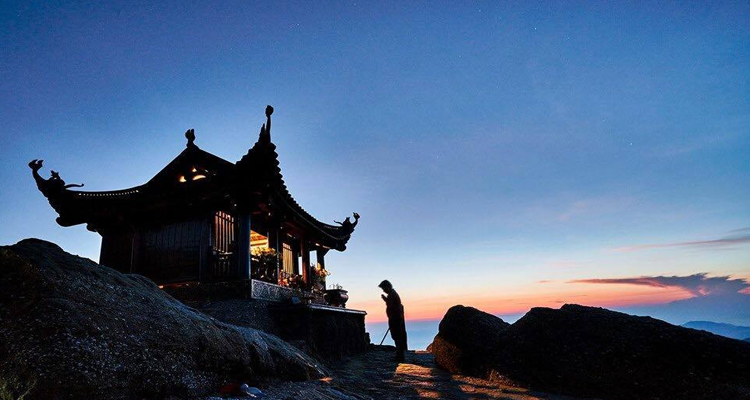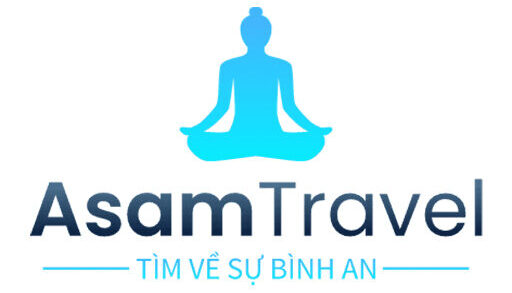Yên Tử, Con Son, Kiep Bac: the Spiritual Heart of Vietnam
Vietnam has just enriched its prestigious list of UNESCO World Heritage sites with the official inscription, in July 2025, of the Yen Tu–Vinh Nghiem–Con Son, Kiep Bac complex of monuments and landscapes. This global recognition highlights a mystical site and the true cradle of Vietnamese Buddhism, making it an essential destination for travelers seeking meaning, history, and spectacular natural beauty.

A Monumental Spiritual and Historical Complex
The complex is an expansive ensemble of twenty sites spread across forested mountains, plains, and river regions, centered around the majestic Yen Tu mountain range in Quang Ninh Province. This site served as the residence of the Tran Dynasty during the 13th and 14th centuries and is considered the “sacred capital” of Vietnam. More than just a historical location, it is the birthplace of Truc Lam Buddhism — a uniquely Vietnamese Zen tradition that profoundly shaped the Dai Viet kingdom.
The history of this site is closely tied to Emperor Tran Nhan Tong (born Tran Kham in 1258), who is regarded as one of Vietnam’s national heroes. After leading Dai Viet to victory against the Mongol army, he abdicated the throne in 1293 and retreated to Yen Tu in October 1299. There, he founded the Truc Lam Yen Tu Zen school, unifying the Tran Buddhist monastic order. He has since been revered as Vietnam’s “Buddhist King.”

The Truc Lam Zen tradition is distinguished by its ability to absorb the foundations of South Asian Buddhism and Dong Do meditation, while integrating Vietnamese cultural values and encouraging practitioners to contribute to society based on compassion and wisdom.
The Treasures of the Complex
The Yen Tu complex is home to numerous pagodas, temples, shrines, and archaeological relics associated with key religious and historical figures. Its Buddhist architecture remains highly faithful to original designs, using valuable materials such as bronze and ironwood to preserve traditional and popular Vietnamese values. The pagoda halls are ingeniously designed to be spacious and filled with natural light, with optimal airflow for a serene and harmonious atmosphere.
Among the iconic sites are:
- Hoa Yen Pagoda, the central meditation site of King Tran Nhan Tong, with origins dating back to the Ly and Tran dynasties (11th–14th centuries).
- Dong Pagoda (Bronze Pagoda), the most famous and highest of all, perched at 1,068 meters above sea level. Entirely built of bronze in 2007 and designed in the shape of a lotus flower, it is renowned for harmonizing with the cosmos and bringing good fortune and spiritual awakening.
- The tower housing the relics of King Tran Nhan Tong is also considered by many to be the most spiritual and “energetically charged” place in the entire complex.
A Pilgrimage Through Pristine Nature
Yen Tu is a vibrant pilgrimage site, drawing over a million visitors each year, especially in the spring season (from late January to March). Pilgrims can follow sacred trails or embark on a more physically demanding hike to the mountain’s summit. A cable car offers easier access for those who prefer a more relaxed journey, while the footpath presents a long and challenging, yet rewarding, route.
The site is strategically located in a favorable geological setting and is part of the Tay Yen Tu Nature Reserve, which spans over 13,000 hectares of forest. This reserve is a thriving ecosystem, home to a rich variety of flora and fauna, including 285 species of mammals, birds, reptiles, and amphibians.
The Impact of UNESCO Recognition and the Visitor Experience
The UNESCO inscription, based on cultural criteria, is seen as “free global publicity,” expected to significantly boost tourist numbers and positively impact local employment and income through tourism development. It also provides an opportunity to connect Yen Tu with other exceptional national heritage sites in Quang Ninh, such as Ha Long Bay, to create diverse tourist itineraries combining spectacular natural beauty with unique cultural values.
For an immersive and luxurious experience, the Legacy Yen Tu MGallery resort, located at the foot of the mountain, offers high-end accommodation inspired by Yen Tu’s vernacular architecture. The resort features a spring-water swimming pool, a full-service spa (including onsen, hammam, sauna, and Himalayan salt room), a vegan restaurant, as well as yoga and meditation sessions.
Ultimately, Yen Tu–Vinh Nghiem–Con Son, Kiep Bac is not just a mountain, but a place of memory, reflection, natural beauty, and unique spiritual heritage. Thanks to its recent UNESCO recognition, it has established itself as an essential destination for anyone wishing to explore the deep soul of Vietnam.

FAQ – Practical Information for Your Visit to Yên Tử
How do I get to the Yen Tu–Vinh Nghiem–Con Son, Kiep Bac complex?
The site is located about a 2.5-hour drive from Hanoi and 1 hour from Ha Long Bay. You can reach it by private car, motorbike, or opt for a shuttle service (such as a limousine) which can be arranged by your hotel.
What is the best time to visit Yen Tu?
The spring season (from late January to March) is the busiest and most vibrant, attracting thousands of pilgrims for the annual festival. However, we recommend visiting in autumn (October and November), after the rainy season, when temperatures are mild and perfect for meditative walking.
What costs should I expect for a visit?
- Entrance to the site is free.
- Access to the cable car is paid, costing around 320,000 VND per person for a round trip covering both sections, which is approximately $10–15.
- If you stay at the Legacy Yen Tu MGallery, room prices range from $80 to $120 per night for the least expensive room (cheaper during weekdays) and about $200 per night for more luxurious rooms, with breakfast included.
- Meals at the hotel cost around $10 to $15 per person, but cheaper options are available at the hotel’s “village.”
- A massage at the hotel spa costs about $50 per hour.
Is the Yen Tu site family-friendly?
Yes, the site is suitable for families, especially if you use the cable car for the ascent. The hike on foot, while possible, is quite physically demanding.
Is it necessary to hire a guide to visit the complex?
It’s not mandatory, but highly recommended to fully understand the history and deeper significance of the site.
What should I wear and bring for the visit?
As a sacred site, it’s important to respect local customs and spiritual practices. It is recommended to dress appropriately and maintain silence when required. If you plan to hike, make sure to wear comfortable shoes and suitable clothing. Also, bring sun protection and water to stay hydrated. The hike on foot is considered physically demanding and can be quite challenging.
What activities can you do on-site?
- Undertake a pilgrimage along the sacred trails.
- Climb the mountain to enjoy spectacular views.
- Visit the pagodas and shrines, notably Hoa Yen Pagoda and Dong Pagoda.
- Explore the artisan village of Làng Nương.
- If staying at Legacy Yen Tu MGallery, participate in yoga and meditation sessions or enjoy the hotel’s luxury spa.
Are there any other useful tips for the visit?
- Be sure to plan your visit by checking the opening hours to make the most of your stay.
- Try the local cuisine offered by food stalls near the site.
- The visit is a deep cultural and spiritual experience, perfect for reconnecting with nature and yourself.
- It is recommended to allow at least two nights to fully recharge
